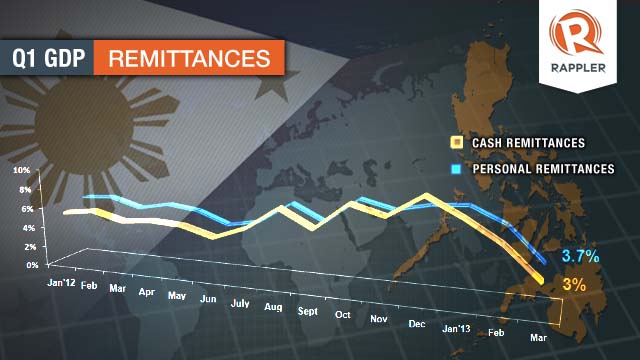SUMMARY
This is AI generated summarization, which may have errors. For context, always refer to the full article.
MANILA, Philippines – Filipinos living and working overseas will likely send home some $24 billion in remittances this year, based on World Bank’s projection, keeping the Philippines in the top 5 remittance-receiving developing countries worldwide.
The World Bank forecast, contained in the lender’s latest Migration and Development report, exceeds the $21.5 billion remittance forecast of the Philippine central bank.
Based on the report, India will be the biggest recipient of remittances at $70 billion, followed by China, at $66 billion, and the Philippines and Mexico at $24 billion.

The World Bank said overseas worker remittances will continue to be the largest source of development finance needed to lift millions of Asians out of poverty.
The lender said remittances to developing countries are expected to reach $406 billion in 2012, up by 6.5% from $381 billion in 2011.
Remittances to developing countries will likely reach $438 billion or a 7.9% growth in 2013; $482 billion or a 10.1% growth in 2014; and $534 or a 10.7% growth in 2015.
“Although migrant workers are, to a large extent, adversely affected by the slow growth in the global economy, remittance volumes have remained remarkably resilient, providing a vital lifeline to not only poor families but a steady and reliable source of foreign currency in many poor remittances recipient countries,” World Bank Development Prospects Group Director Hans Timmer said in a statement.
Extraordinary resilience
Workers are showing extraordinary resilience amid changing global conditions. This was proven by Filipinos overseas who, at the height of the global economic crisis, were still able to send home some $17.35 billion, the World Bank said.
This resilience is expected to continue in the coming years.
The World Bank said that South Asia, MENA and East Asia and Pacific regions, which have large numbers of workers in the Gulf Cooperation Council (GCC) countries, will see a better-than-expected growth in remittances.
The World Bank said 2012 remittances for
- South Asia will reach $109 billion or a 12.5% growth over 2011;
- East Asia and Pacific region, $114 billion, an increase of 7.2%; and
- MENA is expected to receive $47 billion, an increase of 8.4%.
“Migrant workers are displaying tremendous resilience in the face of the continuing economic crisis in advanced countries,” World Bank Migration and Remittances Unit Manager and lead author of the Migration and Development Brief Dilip Ratha said.
“Their agility in finding alternate employment and cutting down on personal expenses has prevented large scale return to their home countries,” Ratha added.
Risks
Despite the growth and resilience of remitttances, the Washington-based lender said unemployment in Europe and stringent migrant worker-related policies will pose “serious downside risk” to its outlook.
The World Bank said other obstacles to the growth of remittance flows is the high cost of sending money, which averaged 7.5% in the third quarter of 2012 for the top 20 bilateral remittance corridors and 9% for all countries for which cost data are available.
The bank said the average remittance cost for Sub-Saharan Africa was 12.4%, the highest among all developing regions.
The bank also discussed the promise of mobile remittances, which has yet to be fulfilled, despite the skyrocketing use of mobile telephones throughout the developing world.
Mobile remittances fall in the regulatory void between financial and telecom regulations, with many central banks prohibiting non-bank entities to conduct financial services. Central banks and telecommunication authorities, thus, need to come together to craft rules relating to mobile remittances.
However, the Philippines, Kenya, Tanzania, Fiji, Samoa, and Tonga are among remittance-receiving nations that have established mobile remittance systems. The bank said these countries should be used as models to maximize mobile technology.
The World Bank report also discussed the implementation of the new remittance regulations in the United States and Europe and concluded that these regulations are likely to lower remittance costs in the long run by increasing competition and improving consumer protection.
“The global community has made progress in 3 out of 4 areas of the global remittances agenda – data, remittance costs, and leveraging remittances for capital market access for countries.”
Progress, however, has been slow in the area of linking remittances to financial access for the poor.
“There is great potential for developing remittance-linked micro-saving and micro-insurance schemes, and for small and medium enterprise (SME) financing,” said Ratha. – Rappler.com
Add a comment
How does this make you feel?
There are no comments yet. Add your comment to start the conversation.